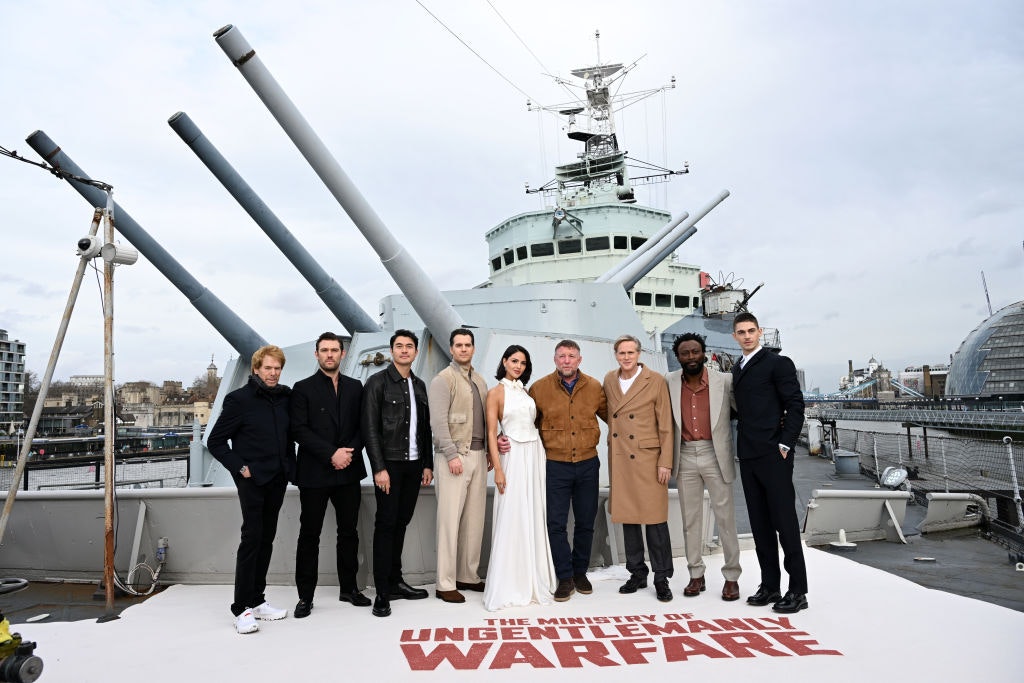This article is taken from the August-September 2024 issue of The Critic. To get the full magazine why not subscribe? Right now we’re offering five issues for just £10.
Perhaps more than any other genre, the Western belongs to cinema. We had war stories before we had movies, superheroes came from comic books, and musicals from the stage. Meanwhile cowboys, gunslingers, lawmen, the cavalry — well, they may have begun in 19th century dime novels, but they were made great on the silver screen.
For decades, Westerns were the way filmmakers explored ideas and storytelling. Stagecoach remains the model for strangers forced to work together in the face of external threat, and Shane for a man trying escape his past.

They were political: Soldier Blue, just re-released in a high-definition restoration, was a furious Vietnam allegory, showing the US Cavalry as murderous thugs rather than heroes. High Noon reflected McCarthyism, as Gary Cooper’s sheriff found his friends abandoning him.
Howard Hawks made Rio Bravo as a reply, with friends of John Wayne’s lawman sticking with him just fine. They asked the big questions: can we change who we are? (No, replied Clint Eastwood in Unforgiven.) And they gave us some of the great screen friendships, from Butch Cassidy and the Sundance Kid to The Magnificent Seven.
They have inspired other genres. One of the many recent Star Wars spin-offs, The Mandalorian, was very consciously a space Western, repackaged for a generation that finds cowboys to be old hat. Jack Reacher, the hero of Lee Child’s blockbusting thrillers, is a modern Shane, a man with no middle name wandering into town to do what a man’s gotta do.
A new screen Western is always welcome, and Kevin Costner is giving us four of them, back to back, in Horizon. He promises they will make up an epic tale of how America was built. If they don’t, we may at least get a decent yarn about troubled movie projects: Chapter 1 is rapidly disappearing from cinemas, Chapter 2’s release has been pushed back, and filming on Chapter 3 is underway as I type. Whether we’ll ever get Chapter 4 is anyone’s guess.
Chapter 1 is a strange beast of a film: a collection of character stories rather than a single narrative. Somewhere in a snowy landscape, a woman shoots a man and flees with a baby. Then on the sun-kissed banks of the San Pedro river, settlers trying to build the new town of Horizon are slaughtered in the night by Apache.
This is a long, gripping sequence, surprising in a film made in an era of such acute political sensitivity. There is no throat-clearing explanation that the attackers have previously been wronged and are acting out of misguided self-defence: they are simply a faceless horde murdering families.
This sparks a revenge mission, very much in the manner of John Ford’s The Searchers: a group of survivors set off to find the Apache attackers, though it starts to become clear that any Apache will do.
Elsewhere a wagon train is snaking towards Horizon, bringing a new wave of settlers. Up in Wyoming a horse trader played by Costner steps into a situation he doesn’t understand to defend a woman he’s just met.
It’s all very well done. The landscape is beautiful, the characters nicely drawn, the action gripping. It was a pleasant way to pass an afternoon. But I’d struggle to tell you what Chapter 1 is about. After three hours, the stories remain unlinked.
Rather than leaving us with a sense that one part of a longer story has been told, the film simply stops, and we get a montage of forthcoming action sequences. These look like they’ll be great fun, but it feels as though they’ve been slapped in there to persuade viewers to come back for Chapter 2. It’s not a sign of confidence that they will.
Costner has suggested that Horizon will eventually end up being chopped up into hour-long episodes for television, and it seems the film has been paced with that in mind. The narratives will, presumably, all knot together neatly by the twelfth hour, assuming his funding lasts that long. I hope it does. I’ve seen more money spent on worse.
To my great sadness, Westerns leave my teenagers cold. For their generation, the main idiom is the superhero franchise — in fairness, these too allow the exploration of the great themes of the day, in between really huge explosions.

The one Western that has gone down well in our house was Quentin Tarantino’s Django Unchained. As ever, the director splatters gore and wisecracks with abandon, but his great skill is to pastiche whichever genre of film he’s making. The result is modern but feels like it might have been made 50 years ago.
He did it with war movies in Inglourious Basterds, a film that, even if it is no Where Eagles Dare, definitely delivers. This, sadly, cannot be said of Guy Ritchie’s attempt to do something similar in The Ministry of Ungentlemanly Warfare. Pitched as an action comedy, it is neither. The battles are predictable and the script is leaden, full of characters explaining the thin plot back to each other.
It is based on a real Special Operations Executive mission, one that was full of genuine political intrigue, twists and thrills, but that is handled so ham-fistedly here that after two hours you won’t simply doubt any part of it is true, you’ll be wondering whether the Second World War even happened.
Enjoying The Critic online? It's even better in print
Try five issues of Britain’s most civilised magazine for £10
Subscribe



